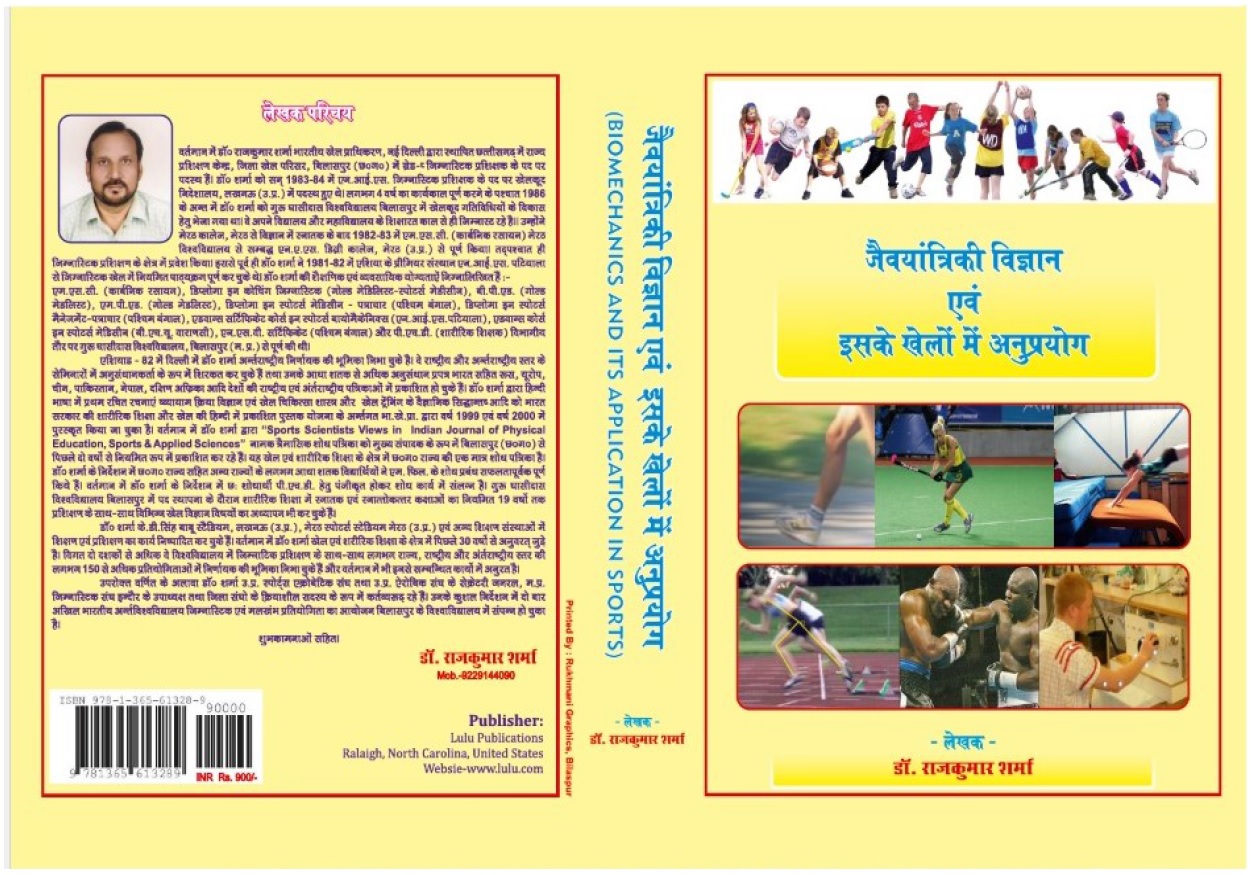| S.No. | Total View Count | Title of Manuscript | Page No | Download/ PDF |
|---|---|---|---|---|
| 1 | REASON OF PARTICIPATION OF INDIAN INTER-UNIVERSITY LEVEL BADMINTON PLAYERS Author: Dr. Shalini Yadav | 48-58 |  5 5 |
Article info
doi no.: 05-2016-44975451; DOI Link :: https://doi-ds.org/doilink/08.2023-84524358/IJPESAS/V12/N4/OCT/2022/A6
AFFILIATIONS:
1 Sports Officer, Government College, Majholi, Jabalpur (M.P) Email: yshalini69b@yahoo.com
In fact determining the reasons that motivate children to participate in sport has been organized as one of the most critical areas of youth sport, Reasons pertaining to improving skills, fitness, learning new skills, challenge and fun were rated as the most important motives for participating in sports. Participation motivation in badminton was examined with male (n=325) and female (n=198) age 12 to 42 years during respective championships. The questionnaire used in this investigation was prepared by Gill, Gross and Huddeston (1983) to assess motives of children involved in sports. To determine difference in reasons expressed for participation in badminton between male and female players, among the players of different levels of participation and from different regions, MANOVA was carried out using mean scores of factors as dependent variables. Univariate tests used to determine which factors contributed to overall participation level different Post-hoc analysis using Scheffes test was used to find out the significance of difference between ordered paired means. The results from the Questionnaire responses indicated that the most important reasons for participating were to improve skills fitness challenges and learn now skills. Factor analysis suggested popularity fitness/friendship, excitement energy release, skill, miscellaneous activity orientation, team affiliation fitness/avoid boredom female placed more importance on popularity and skill than male aid, but the male and female players of different regions of county do not differ in these reasons for participation in badminton.
Keywords: Motivation, Badminton, sex, Senior, Junior, Inter-university, Schools, players.
References
Alderman, R.B. (1978) Strategies for Motivating Young Athletes In : W.F.Straub (ed.) Sports Psychology : An Analysis of Athlete Behaviour, New York: Movement Publications.
Carron, Motivation, (1984) Implications for Coaching and Teaching Sports Dynamics London, Ontario : Canada Weiss, M. R. and Chaumenton, N., Motivational Orientations in Sports as Cited by T. S. Hom ed. (1992) Advances in Sports Psychology Champaign, I L : Human Kinetics.
Battista R. R. (1990). Personal Meaning: Attention to Sports Participation. Perceptual and Motor Skills, (70), 1003 - 1009.
Carlston, D. E. (1983). An Environmental Explanation for Race Differences in Basketball Performance. Journal of Sports and Social Issues, 30 - 51.
Gill, L. D. et. al. (1981). Participation Motivation in Youth Sports. International Journal of Sports Psychology, (14), 1 - 14.
Gould, D, Feltz, D. & Weiss, M. (1985) Motives of Participation in Competition Youth Swimming. International Journal of Sports Psychology, (16), 1-14.
Griffith, L. and Henchen, K. (1982) "Attitudes and Values Associated with Little League Football Competition" as cited by D. S. Eitizen and G. H. Sage (Eds.) Sociology of American Sport: 81 Dubuque, IA.
Klint, K A.& Weiss, M.R. (1986). Dropping In and Dropping Out Participation Motivation of Current and Former Youth Gymnasts. Canadian Journal of Applied Sports Sciences, 106-114.
Kolt, G. S. et. al. (1999). A Cross- Cultural Study of Reasons for Participation in Gymnastics. International Journal of Sports Psychology, 381-398.
Longhurst, Kelvin and Spink, Kevin S. (1987). Participation Motives of Australian Children Involved in Organized Sports. Canadian Journal of Sports Sciences, 12: 24-30.
Page, S. J and Liu, Z. (1997) "Gender Differences and Cultural Differences in Chinese and American Students Participation Motives". Research Quarterly for Exercise and Sports 68: 105.
Raugh, D. and Wall, R. (1987). Measuring Sports Participation Motivation. International Journal of Sport Psychology, (18), 112 - 113.
Sapp, M. and Hanbenstricker, J. (1978). Motivation for Joining and Reasons for not Continuing in Youth Sport Programs in Michigan. Paper Presented at the AAHPER National Conventions Kansas City M.D.
Skubic, E. (1956). Studies of Little League and Middle League Baseball. Research Quarterly, (27), 97 - 110.
Stern, H. P. et. al. (1985). Young Children in Recreation Sports. Clinical Pediatrics, (29), 89 - 94.
Wankel, L. M. and Kreisel, P.(1990). Factors Underlying Enjoyment of Youth Sports: Sports and Age Group Comparisons. Journal of Sports Psychology, (7), 51 54.
Vasudev, D. (2003). An Investigation of Reasons for Participation In Volleyball. Unpublished Master's Thesis, Rani Durgavati University.
Wang, Jun; M, Diana; and B Jornstal, Wiese (1999). The Relationship of School Type and Gender to Motives for Sports Participation Among Youth in the Peoples Republic of China. International Journal of Sports Psychology, (28), 13-24.
Wankel, L. M. and Kreisel, P. (1985). Factors Underlying Enjoyment of Youth Sports: Sports and Age Group Comparisons. Journal of Sports Psychology, (7), 51 54.
Weinberg, R. S. (1981). Why Kids Play or Do Not Play Organized Sports. The Physical Educator; (38), 71 - 78.
 admin@sportscientistsviews.com
admin@sportscientistsviews.com





